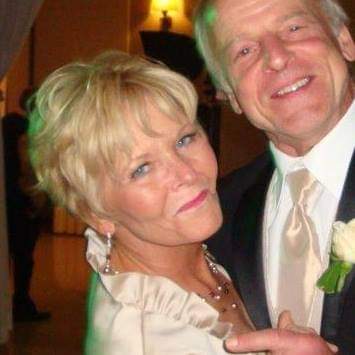We present another reader’s story, this time from JACQUELINE WERKET.
We love it when readers share their stories with Good Grief! Our readers stories reach into the deep truth of life’s most significant experiences.
In this story Jacqueline gives us a striking example of the impact of delayed grief.
Thank you, Jacqueline, for sharing so openly and honestly. When we share the truth of our grief and our journey with it, it helps us to heal. And it also helps others.

In 1981, three months after the birth of my second child, Sarah, I began to have body aches, random panic attacks and fatigue so potent I thought if I stopped and gave in to it, I’d die.
Convinced I was physically ill, I had a blood panel drawn. The results were normal. Normal! I was angry and confused.
Later that day, Sarah and I were stuck in the car during a rainstorm. I turned and looked at my baby girl asleep in her car seat. Captured by her innocence, I began to cry.
As I turned to get a Kleenex from my purse, I was suddenly gripped by something stronger than déjà vu.
“Dear God,” I cried out. “Is this what it’s all about?”
Here I am with another child, in front of another house and with another husband, but all my feelings belong to a different time, ten years earlier in 1971 when my first child had died.

In June 1971, my 16-month-old son, Ian, died from megakaryocytic leukemia, a rare form of leukemia.
The doctors offered us the hope of remission, so we opted for chemotherapy.
Treatment was a nightmare.
Ian died ten weeks later.
Ian’s death was steeped in silence. My husband left me four months later. No one in my family spoke Ian’s name, except once by my father who told me that over time, I would forget to think about Ian. I repressed my grief, and for ten years, it became a shape shifter wreaking havoc on my life in ways I didn’t understand.
I forgot Ian’s birthdate and the anniversary of his death.
But every spring, the season Ian underwent chemotherapy and died my body remembered. Everything from my fingers down to my toes ached. Even my scalp hurt to touch. I had acquired a visceral response to spring.

After the grief resurfaced, I vowed to embrace it.
I didn’t want Sarah to grow up with a mom who was emotionally distant because she couldn’t access her feelings.
I had tried to grieve Ian’s death alone but, I simply survived.
I found a therapist and a grief group.
I learned the only way to heal grief is to feel it and that healing takes place within community not in isolation.
I redefined ‘strong’, learning that real strength is gained through vulnerability, not in being stoic.
Listening to the group members helped bring my repressed grief to the surface. As I listened to their stories, I heard aspects of my own. By telling my story aloud I saw where I had gotten stuck.
As I neared the end of my healing journey, I took two final steps.
I needed to remember Ian’s birthday and the date of his death.
A nurse, Sue, who worked at the hospital pulled Ian’s chart so I could read it. His well baby check-ups were in the front of the hospital chart. As I read the clinic visits about a healthy, happy little boy with normal growth and development, it dawned on me, when I repressed the sad memories, I lost all the good memories too!
A week later Sue and I returned to the cancer ward where Ian had died.
Everything looked the same!
When I stepped into the room where Ian had died, he wasn’t lying in his crib crying. I realized that when Ian had let go of his pain, I picked it up and carried it for ten years. I left the hospital feeling a mixture of sadness and gratitude. Sadness for all I had lost and gratitude for the capacity to begin again.
~~
“I have a forum so people can share their story of delayed grief briefly. I want them to know they are not alone,” says Jacqueline.
Jacqueline’s website, designed to support people with delayed grief, will be open to readers from the end of August.
https://www.jacquelinewerket.com

Footnote: While we were preparing this article for publication, Jacqueline sent this lovely photo of her and her husband. It shows a beautiful, smiling, engaged woman sharing a dance with her husband of more than 40 years. We love this photo. It shows there really can be life beyond our grief.
